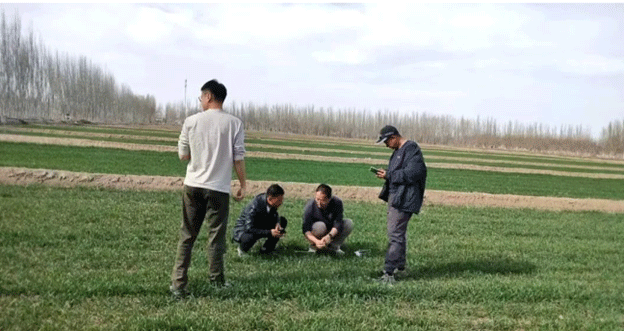As temperatures rise and spring unfolds, wheat crops enter critical growth stages where weed management becomes paramount. Effective herbicide application during this period ensures robust crop development and optimal yields. Understanding the nuances of herbicide selection, application timing, and environmental considerations is essential for farmers and agricultural professionals.
Understanding the Critical Period for Weed Control
The onset of spring marks a pivotal time for wheat cultivation, as the crop transitions into stages such as tillering and jointing. Weeds emerging during this period can significantly hinder wheat growth by competing for essential resources like nutrients, water, and light. Studies have shown that uncontrolled weed infestations can lead to yield losses ranging from 25% to 30% in wheat crops.
Identifying Common Weeds in Wheat Fields
In regions like China, prevalent weeds that pose challenges to wheat crops include:
- Avena fatua (wild oats)
- Phalaris minor (lesser canary grass)
- Convolvulus arvensis (field bindweed)
- Fumaria indica (Indian fumitory)
- Melilotus indica (Indian sweet clover)
Effective identification and timely management of these weeds are crucial to prevent substantial yield reductions.
Selecting and Timing Herbicide Applications
Choosing the appropriate herbicide and applying it at the correct growth stage are critical for effective weed control and minimizing crop injury. For instance, herbicides like 2,4-D and MCPA are effective against broadleaf weeds but should be applied between the tillering and jointing stages of wheat. Applying these herbicides beyond the recommended stages can lead to reduced efficacy and potential crop damage.
Environmental Considerations for Herbicide Efficacy
Environmental factors, particularly temperature, play a significant role in herbicide performance. Herbicides should be applied when daily temperatures are consistently above 10°C (50°F) to ensure active weed growth and optimal herbicide uptake. Applying herbicides during colder temperatures or when frost is imminent can increase the risk of crop injury and reduce weed control effectiveness.
Integrating Cultural Practices with Chemical Control
Combining herbicide applications with cultural practices enhances weed management strategies. Implementing crop rotation, maintaining optimal planting densities, and ensuring proper fertilization can suppress weed emergence and growth. For example, rotating wheat with legumes or other crops can disrupt weed life cycles and reduce weed seed banks in the soil.
Effective weed management during the spring is vital for the success of wheat crops. By accurately identifying weed species, selecting appropriate herbicides, timing applications correctly, and considering environmental factors, farmers can significantly enhance crop health and yield. Integrating chemical controls with cultural practices offers a comprehensive approach to sustainable wheat production.
Error




